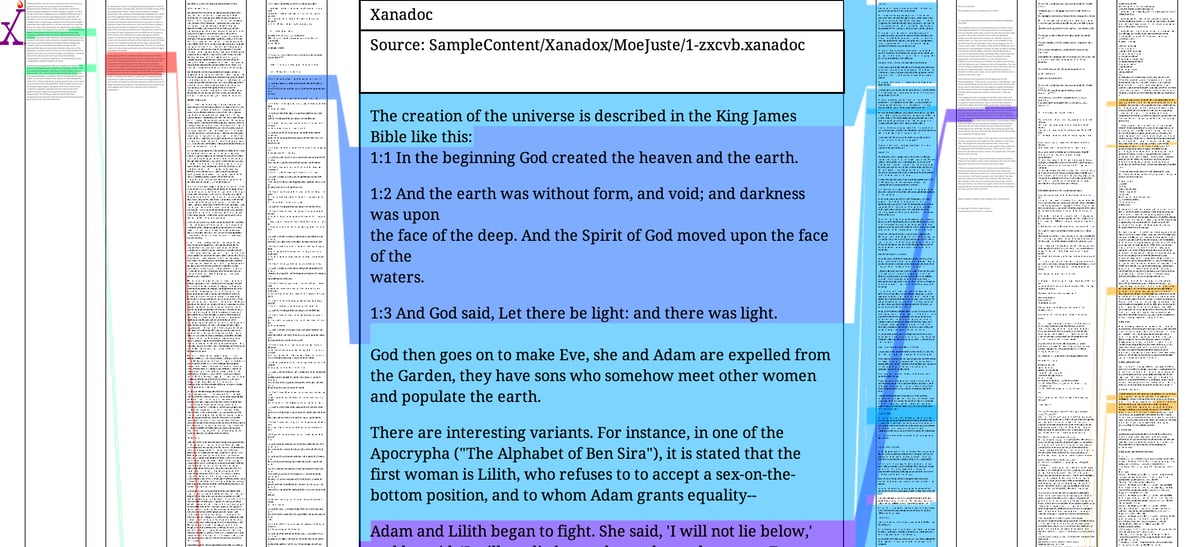Pioneering hypertext project Xanadu released after 54 years

Ted Nelson coined the term “hypertext” in 1963 to describe a computing interface project he’d been working on called Xanadu. Xanadu, Nelson wrote some ten years ago, “is often misunderstood as an attempt to create the World Wide Web”:
It has always been much more ambitious, proposing an entire form of literature where links do not break as versions change; where documents may be closely compared side by side and closely annotated; where it is possible to see the origins of every quotation; and in which there is a valid copyright system— a literary, legal and business arrangement— for frictionless, non-negotiated quotation at any time and in any amount. The Web trivialized this original Xanadu model, vastly but incorrectly simplifying these problems to a world of fragile ever-breaking one-way links, with no recognition of change or copyright, and no support for multiple versions or principled re-use. Fonts and glitz, rather than content connective structure, prevail.
Nelson’s idea was to preserve a hypertext’s source documents along with the new composite, making the links between them visible and navigation between them as easy as possible: no file hierarchy, but documents maintained and comparable in parallel, for commentary, annotation, or recombination. It aims to be post-paper, instead (like Vannevar Bush’s hypothetical memex machine) directly imitating associative patterns of thought.
Instead of deleting content from one place and plugging it into another (today’s distorted meanings of the venerable terms “cut” and “paste”), the author should be able to pull screen contents from old versions into new, seeing all points of origin and also seeing what contents have not yet been used.
Xanadu never shipped a working product (“perhaps due to our net negative funding”), but Nelson wrote many articles and two books (Dream Machines and Literary Machines) that influenced the development of the personal computer and the world wide web, as well as every other idiosyncratic hypermedia model that’s come along since.
Finally on April 24 of this year, Nelson slipped a “one more thing” into an event at Chapman University: OpenXanadu, a working model of the document type and interface, programmed by Nicholas Levin and running in a web browser.
It’s a little awkward (“don’t touch the mouse!” the instructions yelp), but it’s all there, it’s pretty cool, and more than fifty years later, it’s still cracking fire about what computer work could look like.
We foresaw in 1960 that all document work would migrate
to the interactive computer screen, so we could write in new ways—
- paper enforces sequence— we could escape that!
- paper documents can’t be connected— we could escape that!
- this means a different form of writing
- this means a different form of publishing
- this means a different document format,
to send people and to archive.We screwed up in the 1980s,
and missed our chance to be world wide hypertext
(the Web got that niche).
However, we can still compete with PDF,
which simulates paper,
by showing text connections.
PDFs better recognize.





Stay Connected